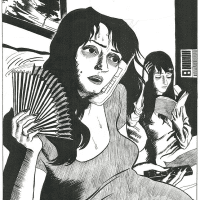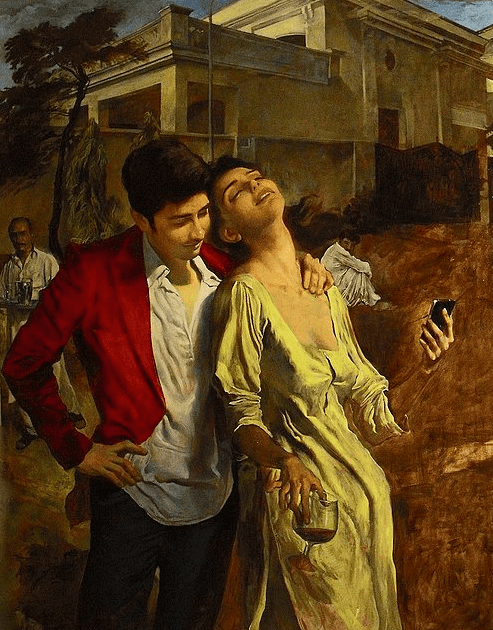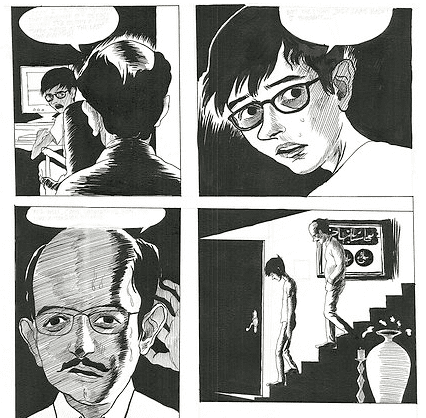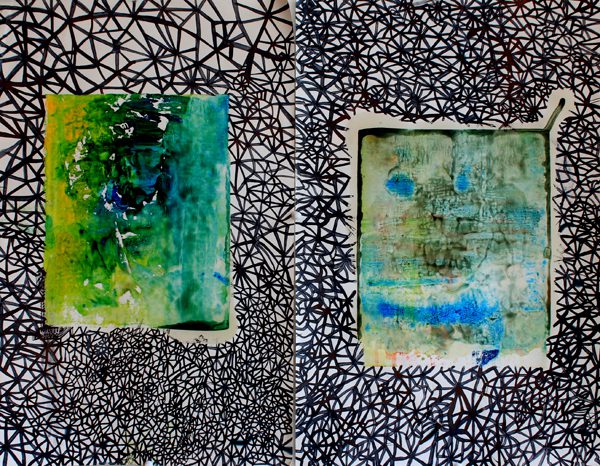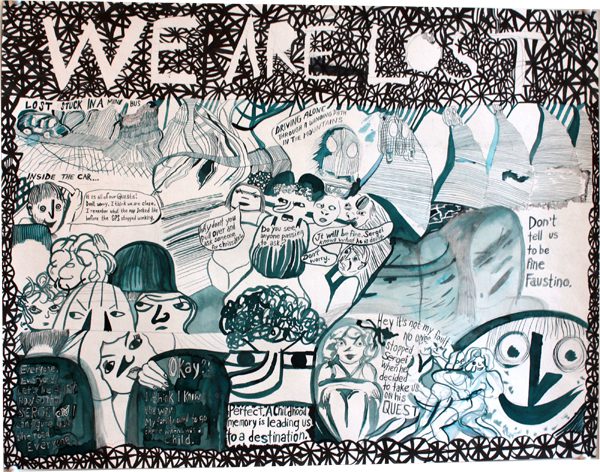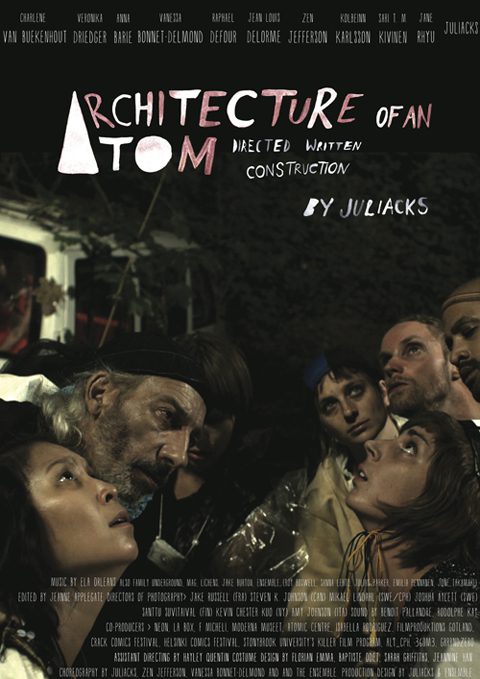The New York Comics & Picture-Story Symposium is a weekly forum for discussing the tradition and future of text/image work. Open to the public, it meets Monday nights 7-9 p.m. EST in New York City. Presentations vary weekly and include everything from historical topics and technical demonstrations to creators presenting their work. Check out upcoming meetings here.
The 96th meeting of the New York Comics and Picture-Story Symposium was held at BHQFU on Monday, August 26. Alexandra Atiya and Salman Toor presented about their graphic novel collaboration, Electricity Thieves, and Juliacks presented about her trans-media project, Architecture of an Atom.
Alexandra Atiya and Salman Toor: Electricity Thieves
Alexandra Atiya and Salman Toor have been working together for the past year on Electricity Thieves. Toor is a Pakistani painter who recently finished his MFA at Pratt Institute in Brooklyn. He draws on Pakistani consumer culture to make classical European oil paintings that comment on the social divisions in modern Pakistan. Alexandra Atiya, a writer and friend of Toor’s, noted that the paintings often contained an implicit narrative. Together the two of them began developing a larger narrative structure for the themes that Toor is working with.
Electricity Thieves follows two telepathic teenagers named Ozzie and Ayesha who are from an affluent family in Lahore, Pakistan. When Ozzie is kidnapped, the family struggles to get him back and uncover the forces behind his kidnapping. Setting the story in an upper-middle class family allows the work to comment on the Westernization of the younger generation and class divisions in Pakistan. Toor noted that the upper classes are rarely the focus of visual art because those themes are considered unworthy of depiction.
In regard to their process, Atiya and Toor said that they begin by discussing the plot points and themes. Atiya then turns these conversations into dialogue that is broken down by panels. Before beginning the illustration, Toor translates the dialogue into Urdu and then back into English. They plan to first complete the work in English, but would consider an Urdu translation if resources allowed.
Transitioning from oil painting to comics illustration has been a major challenge for Toor. He commented that comics illustration requires that the same panels be drawn over and over again, with each panel interesting but not jarring. He prefers to develop his own solutions based on his painting background.
Alexandra Atiya is currently moving to Canada to begin her MA at the Centre for Medieval Studies at the University of Toronto. You can find her work at alexandraatiya.wordpress.com.
Salman Toor divides his time between Lahore, Pakistan and New York. You can find his work at www.salmantoor.com.
Juliacks: Architecture of an Atom
Juliacks began her presentation by discussing some of the historical works that have influenced her current project, Architecture of an Atom. She was working in comics, having completed the Ignatz-nominated Swell in 2010, when she discovered the study of semiotics, archetypes and universal symbols through the art of pysanky (writing/decorating on eggs) by way of Carl Jung. This led her to look at the beginnings of language and written meaning in works such as the Egyptian Book of the Dead and the Epic of Gilgamesh.
Research allowed Juliacks to reach beyond the last hundred years of printed comics to a whole range of sequential illustrated works. In the Sumerian artifact Standard of Ur: War/Peace from 2,600 BC, she found comic conventions such as a large centrally-located main figure. In the illuminated manuscript Apocalypse of Saint Sever, by 11th century monk Stephanus Garsia, she found a proto-graphic novel.
Drawing on these influences, Juliacks’s current work is a trans-media project that combines films, performances, and comics. The nucleus of the project is the story of a group of immigrants to France who meet at a swimming class and later live together in an abandoned swimming pool.
Architecture of an Atom is a collaborative project that allows Juliacks to incorporate stories beyond her own experience. The performance and film components are largely completed, and she is now focused on the comics. The comic narrative is fragmented into distinct pieces that range from passport-sized comics to the main work which is 11.5 x 16.7″. These books within the book are written in a nonlinear order, and do not need to be read in a fixed sequence. One is a passport poem, one is autobiographical, and the main body is a fiction that runs in parallel to the medium feature film. This work makes a nod to Chris Ware’s Building Stories in structure, while instead of using a building, her form is an atom. Juliacks spoke about how she is using the structure of the project to give structure to the narrative.
Juliacks is currently completing a residency at BHQFU and is moving to Amsterdam this fall for the two-year residency program, De Ateliers. The film component of Architecture of an Atom will premiere on October 3rd at the Moderna Museum in Stockholm. You can find more of Juliacks’s work at juliacks.com.
***
About the author: Orion Martin is a comics writer and critic whose work focuses on the intersection between science fiction and social commentary. You can find his work at orionnotes.com/art or r-o-martin.tumblr.com.
